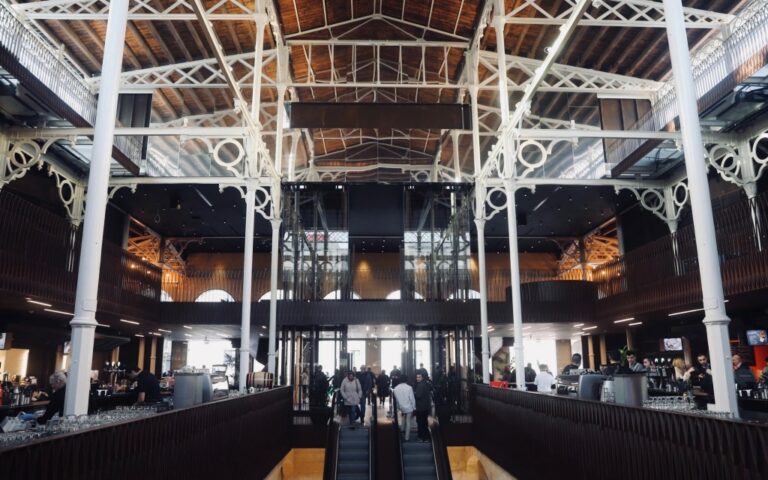Introduction: Exploring Maltese Culture through Cuisine
Cuisine is one of the most important aspects of any culture, as it reflects the history, traditions, and lifestyle of a particular place. Malta, a small island country located in the Mediterranean Sea, has a rich culinary heritage that reflects its diverse cultural influences and unique geographical location. From the traditional dishes that have been passed down for generations to the contemporary culinary scene that celebrates modern techniques and tastes, Maltese cuisine is a true reflection of the island’s history and culture. In this article, we will explore the various influences from Maltese arts, crafts, and architecture in the cuisine.
Maltese Arts and Crafts: A Reflection of the Island’s Rich Heritage
Malta is known for its rich artistic and cultural heritage, which is reflected in its traditional arts and crafts. The island’s artisans are skilled in various crafts such as pottery, weaving, and lace-making, which have been passed down from generation to generation. These crafts have had a significant influence on Maltese cuisine, as traditional cooking utensils such as clay pots and sieves are still used in many households. The use of traditional crafts in the preparation of food not only reflects the island’s heritage but also adds a unique flavor and texture to the dishes.
Maltese cuisine also reflects the island’s artistic heritage through its presentation. Traditional Maltese dishes are often served on handmade pottery or woven baskets, adding a rustic touch to the dining experience. The use of intricate lace tablecloths and embroidered napkins also adds a touch of elegance to the dining table. Overall, the use of traditional arts and crafts in Maltese cuisine adds a unique and authentic touch to the dining experience.
Architectural Influences: How Maltese Buildings Shape the Culinary Experience
The architectural influences on Maltese cuisine are primarily reflected in the design of its restaurants and cafes. The island’s unique architecture, which includes Baroque, Gothic, and Renaissance styles, is reflected in the design of many of its restaurants and cafes. The use of traditional Maltese limestone, which is a prominent feature in the island’s architecture, is also used in the design of many restaurants and cafes. This not only adds a unique touch to the dining experience but also reflects the island’s rich architectural heritage.
The architecture of Malta also influences the flavors and ingredients used in its cuisine. The island’s location in the Mediterranean Sea means that it has been influenced by various cultures over the centuries, including Arab, Spanish, and Italian. The architecture of these cultures is reflected in the use of spices such as cinnamon and saffron, as well as ingredients such as olives and tomatoes, which are commonly used in Maltese cuisine.
From Farm to Table: The Role of Agriculture in Maltese Cuisine
Agriculture has played a significant role in Maltese cuisine since ancient times. The island’s fertile soil and sunny climate make it an ideal location for growing various fruits and vegetables, such as melons, oranges, and tomatoes. Agriculture also plays a vital role in the production of traditional Maltese dishes such as rabbit stew and fish soup. The island’s fishermen and farmers work together to provide fresh and locally sourced ingredients for these dishes.
Agriculture also influences the flavors and textures of Maltese cuisine. The use of fresh herbs such as basil and oregano, which are grown locally, adds a unique and flavorful touch to many dishes. The island’s agricultural heritage is also reflected in the use of traditional cooking techniques such as slow-cooking, which is used in many traditional Maltese dishes.
Traditional Maltese Dishes: A Fusion of Mediterranean Flavors
Maltese cuisine is a fusion of various Mediterranean flavors and influences. The island’s location in the heart of the Mediterranean means that it has been influenced by various cultures over the centuries, including Arab, Spanish, and Italian. The flavors of these cultures are reflected in the ingredients and spices used in traditional Maltese dishes.
Some of the most popular traditional Maltese dishes include rabbit stew, fish soup, and pastizzi (a type of savory pastry filled with ricotta or peas). These dishes are a true reflection of the island’s history and culture, and they are still enjoyed by locals and visitors alike. The use of local and fresh ingredients also adds a unique and authentic touch to these dishes.
Contemporary Culinary Scene: Modern Twist on Classic Maltese Cuisine
The contemporary culinary scene in Malta celebrates modern techniques and tastes while still paying homage to the island’s culinary heritage. Many restaurants and cafes in Malta offer innovative dishes that fuse traditional Maltese ingredients with modern cooking techniques. For example, some restaurants offer a modern twist on traditional dishes such as rabbit stew, using sous vide cooking techniques to create a new and exciting dining experience.
The contemporary culinary scene in Malta also reflects the island’s diverse cultural influences. Many restaurants offer a fusion of Mediterranean and international flavors, creating a unique and exciting dining experience. Overall, the contemporary culinary scene in Malta celebrates the island’s culinary heritage while also embracing new and innovative techniques and tastes.

